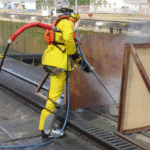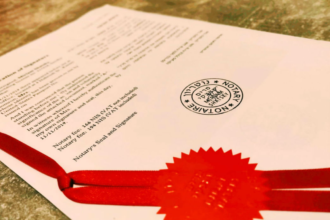Car accidents cause serious injuries that last forever and hit the victims with huge medical bills, loss of income, and emotional suffering. Truck accidents lead to all such things. People are compensated for the injuries they suffered through the negligence of another person through personal injury law. This article is about the basics of personal injury law and several of the common causes or part injuries involving vehicle collisions that are usually with the filing of a claim, including the processes and challenges involved.
- An Overview of Personal Injury Law
- Causes Behind Car Accidents and Truck Accidents
- Types of Injuries in Vehicle Accidents
- Immediate Steps to Take After an Accident
- The Process of Filing a Personal Injury Claim
- Compensation: What Can Crash Victims Expect?
- Challenges in Pursuing a Personal Injury Claim
- The Role of Legal Assistance
- Conclusion
An Overview of Personal Injury Law
Personal injury is a subdivision of civil law, which allows people to sue other people for injuries suffered through action or failure to act. A damaged party resulting from an automobile or truck accident may sue the party that caused the incident. The main thrust of the personal injury law is to restore or make good the position of the victim as close as possible to what it was before the occurrence of the accident.
At the heart of every personal injury case are four key elements:
Breach of duty: An instance occurs where the driver fails to comply with this duty, by speeding or texting while driving.
Causation: The breach of duty has to directly link the injury caused in the accident.
Damages: Measurable losses would be incurred by the injured party, whether it be suffered financially, physically, or emotionally.
When all these elements exist, the aggrieved person is entitled to rightfully claim for compensation to cover their medical expenses, lost income, pain and suffering, and sometimes, even more for long-term effects.
Causes Behind Car Accidents and Truck Accidents
Vehicle collisions are not random events; many are the result of human error or mechanical failure. Below are some of the typical causes:
- Distracted Driving
Distractions created by mobile phone use, eating, or conversing with in-vehicle technologies are responsible for a considerable number of accidents. Diverted attention on the part of a driver slows reaction time and makes collision more likely.
- Speeding and Reckless Driving
Speed limit violations, as well as unsafe practices of driving, bring with them a poor margin of safety during quick lane changes or nearing traffic, leading to the increased probability that mishaps will occur and that injuries will be severe. - DUI
Alcohol or drugs dull the perceptory faculties and increase the time of reaction of any person. Drunk driving is responsible for most serious accidents that tend to be disastrous.
- Drowsiness
Who’s an Interesting thing, especially for commercial truck drivers, who should not be on the road for too long without the proper amount of rest; otherwise, their concentration and reaction times are severely affected.
- Mechanical Failures
Aid in poor vehicle maintenance, bad brakes, and blowouts that can all cause loss of control and subsequent accidents. In truck accidents, overloading and lack of maintenance by fleet operators pose an extra weight of complexities.
- Weather Impairment
Rain, snow, fog, and frost can all affect visibility and traction, thereby increasing the chances of an accident, even when a driver isn’t breaking any rules.
These factors act alone, but they also can act in combination with others, which would create very complex conditions to decide whom to hold liable and may also determine the severity of injuries.
Types of Injuries in Vehicle Accidents
Car accident injuries and truck accident injuries diverge in symptoms and treatments contingent upon collision types. Some injuries can be seen from the outset; others take days to become evident. Common injuries include:
Whiplash and soft tissue-related injuries
Whiplash occurs when the impact suddenly forces the neck to jerk out of a normal range of motion. Bruising and soft tissue injuries such as sprains can also result from much lower-speed accidents.
Broken bones and fractures
The impact force can break bones, mainly if surgery and rehabilitation are involved. Fractures in the arms, legs, and ribs are common in seriously disturbing collisions.
Head trauma and traumatic brain injuries (TBI)
Concussions or more serious brain injuries can occur in an accident when the head strikes an object or is subjected to a harsh jolt.
Injuries to the Spinal Cord
In these cases, paralysis may become either complete or partial. Recovery is prolonged and would involve medical attention and physical therapy for a longer time. In some cases, effects may remain forever.
Internal injuries
Internal organs such as the liver or kidneys may sustain injury and would require immediate surgical intervention. Such injuries may endanger a person’s life unless diagnosed and treated immediately.
Psychological impact
Truck accidents tend to be more severe because of the added mass and sheer size of the commercial vehicles. This also makes it so that in the case of an accident, the factor affecting the level of severity on the injuries suffered is often increased. This, in turn, raises the fatal risk or the chance to attain a permanent disability.
Immediate Steps to Take After an Accident
The choices made in the moments following a vehicle collision can significantly influence the outcome of any future legal claims. The following steps are critical for anyone involved in a car accident or truck accident:
- Seek Prompt Medical Attention
Even if no injuries seem apparent, medical evaluations are crucial. Some injuries may not manifest symptoms until later, and documentation from a healthcare provider is vital for a potential claim. - Call Law Enforcement
Reporting the accident provides an official record of the incident. A police report can offer an impartial account of the events, which is often essential when filing a claim. - Document the Scene
Photographic evidence can be very beneficial. Record images of the vehicles, visible injuries, road conditions, and any pertinent signage or signals. It is important to collect
information from all parties involved as well as from witnesses.
- Gather Information
Exchanging insurance details and contact information with other drivers lays the groundwork for potential claims. Additionally, noting factors such as weather conditions and road hazards can later support a claim for negligence. - Refrain from Admitting Fault
Even if it appears that both parties share some responsibility, admitting fault on the scene might complicate later claims. It is best to leave the determination of liability to the professionals involved in the investigation. - Contact a Legal Professional
Involvement of an early personal injury lawyer would be much needed to ensure one’s rights protection and to help clarify legal options opened for one. DJC Law is among the firms dealing with accident-related claims that can help determine whether to accept an initial settlement offer or opt for further negotiation instead. Another advantage of careful compliance with the procedures outlined above is that it ensures personal safety and strengthens position- at least towards the end-of-the-road compensation through legal claims.
The Process of Filing a Personal Injury Claim
After initial medical attention and evidence gathering, the next phase is to evaluate and file a personal injury claim. The process generally involves the following stages:
- Investigation and Evidence Collection
Attorneys and investigators review all the gathered evidence, including police reports, photos, witness statements, and medical records. A thorough review of the accident’s details helps establish liability and quantify damages. - Medical Evaluation and Ongoing Care
Complete records of injuries, treatment plans, and associated costs are compiled. An accurate account of injuries forms the basis for the amount of compensation being claimed. - Preparing a Demand Package
The legal representative prepares a detailed demand letter that summarizes the evidence, lists the injuries and damages, and states the compensation sought. This package is presented to the at-fault party’s insurance company. - Negotiations with Insurance Companies
Insurance companies often offer an initial settlement, which may be lower than the actual value of the claim. Negotiations ensure that the settlement covers all current and future expenses related to the accident. Well-prepared evidence typically leads to a more favorable outcome. - Settlement or Litigation
The majority of injury cases are usually settled through negotiation. However, if that does not happen, litigation is followed. Each party then presents its evidence in court, and therewith, the judge or jury decides how much compensation the victim will receive. - Legal representation plays a critical role in all the above stages in finding the ways through very complicated dealings with insurance companies and confirming that all paperwork is substantiating for the victim. It does not matter whether filing a personal injury claim; it is a tight format situation that must be comprehensively addressed in every detail and requires expert involvement to acquire compensation equivalent to all the losses sustained.
Compensation: What Can Crash Victims Expect?
If they’re truly able to prove liability from another party, then accident victims can lay claim to several compensations with respect to car accidents or truck accidents. It covers everything-the compensation speaks for losses suffered and grants reprieve from being burdened financially following the accident. Compensation takes place in the following primary forms:
- Medical Expense
This amounts to the claims that an injured party would reimbursement – namely: from emergency room visits and surgical procedures, hospital stay, medicines, physical therapy, and any future medical treatment that may be required because of lasting injury caused by the incident.
- Lost Salary and Earning Capability
An injured person may not be able to work for a while or even permanently because of the accident. So, the recovery compensation is claimed for the loss of income while healing along with the asserted claims for the injured party’s reduced future income potential due to the supposed injury affecting the chances of future employment.
- Pain and Suffering
And not addiction stood for the expensive realities above, but also, victims from the physical suffering and emotional experiences are above the below amount. These are what make up the very difficult and intangible-to-estimate-from-nearly-economic damages.
- Property Damage
The cost to repair or replace a vehicle after a collision forms an important part of many claims. When vehicles are rendered a total loss, the replacement value may be pursued. - Additional Expenses
In some instances, a victim could also qualify for compensation for ancillary costs. These may include expenses related to transportation to facilitate further medical treatment, home modifications, and professional caregiving services if necessary.
Challenges in Pursuing a Personal Injury Claim
Undoubtedly, taking the step in filing a contract after a car or truck accident is an enormous task. The whole process involves many different parties, extensive amounts of documentation, and usually, negotiation with some form of patience and persistence.Some common challenges include:
- Evidence complication:
Establishing a clear link between the actions of the other party and the resulting injuries requires an exhaustive examination of all evidence. This typically includes expert testimony, accident reconstruction analysis, and thorough medical assessments.
- Negotiations with insurers:
The role of insurance companies is to give as little as possible, so typically, the first settlement offer does not accurately represent the claim. Insurers, therefore, need to have a skilled negotiator to ensure full settlement for all expenses and future losses.
- Time-taking procedures:
Legal proceedings, in a nutshell, usually kick off with filing a claim and will either end in a settlement or go to court departments; these processes may take time. All the while, every step taken under due diligence is meticulously documented so that any delay would not weaken the claim.
- Establishing Liability in Complex Scenarios
When many factors combine to cause an accident or in any situation where liability is contested, it is very critical as well as very difficult to determine liability in these cases.
Successful claims require thorough documentation, analysis by experts, and most of all, careful negotiation. Therefore, an accident’s victim who will secure legal advice in advance is likely to have the upper hand in overcoming the following challenges and securing compensation for injuries.
The Role of Legal Assistance
The task of maneuvering in personal injury law cannot be easy without professional assistance. A knowledgeable attorney will give you insight by handling the intricate details of gathering evidence, preparing the claim, and negotiating with the insurance company. Not all cases will then go perfectly, but such an attorney is in the best position to express the strengths and weaknesses of every case and assist in developing an approach for that case.
An attorney will also ensure that every deadline is met and the victim’s rights are being protected throughout the process. They would act as a buffer between the victim and insurance representatives, bringing in a level-headed perspective that is so often necessary when feelings run high after an accident.
Conclusion
Car accidents and truck accidents are cases with a lot of complication even in themselves that can greatly affect a person’s physical health, financial health, or even quality of life. Personal injury law exists to redress various wrongs occasioned upon persons by the negligence of another. Quite understandably, if an accident victim is aware of some key facts constitutive of a claim-the duty of care, breach of duty, causation, and damages-the victim could embark on a legal process that, if successful, will grant him compensation for the losses he has suffered.
The tediousness of this process involving prompt medical treatment, medical documentation, investigations, negotiations, and even litigation when necessary entails great detail orientation. Virtually all of these obstacles revolve around effectively maneuvering the insurance companies and the complexities of legal evidence.
Ultimately, the gist of personal injury law is to alleviate the scars of life caused by accidents. For the car or even truck accident victims, the correct advice from a lawyer and a strong claim are half the battle won for us to recover the lost income, secure medical treatment, and somehow alleviate the physical and emotional suffering that follows.















